
|
interpretative model
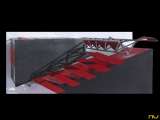
|
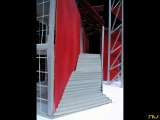
|
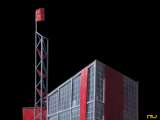
|
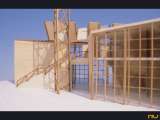
|
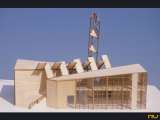
|
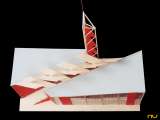
|
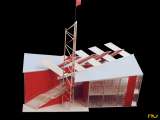
|
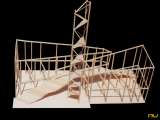
|
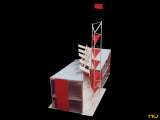
|

|
plans
|
|
USSR pavillion, plans |
analysis
|
In November 1924 the Soviet Union organized a competition to choose the architectural design of the USSR Pavilion for the International Exposition of Modern Decorative and Industrial Arts to be held in Paris in 1925. The participating architects were widely orientated in the formal aspect, there were those still close to classicism like I.A. Fomin, or V. Shchuko; and those that served for the constructivist ranks like M. Ladovskij, V.F. Krinski, M. Ginsburg, I. Golosov, and Kosntantin Melnikov, who became the competitionâs winner. Call for entries stated that the project had to express USSR ideology as an industrial and agricultural workersâ state, as well as the fraternal union among the different nationalities under the 1917 Socialist Revolution flag. Furthermore, it was established that the construction had to be built in wood and be two-story high within a 325 m2 (355.4 sq yd) area. The lower level had to be destined to the ethnical and cultural variety within the nations configuring the Union. While the upper level should had in the interior four meaningful spaces: a workersâ club, a workerâs house, a reading room and a children home, all of them manifestations of the new society. Early on in his work, Melnikov chose a series of symbols which he used to design seven different assemblies: the world sphere, the wheel of history, triangular wedges, the tower, the sickle and the hammer, red flags or âThe Internationaleâ slogans. These configurations were progressively synthesized and assembled as machinery pieces in the work; at some point, there was an intention to incorporate movement as a material, with spins or rotations. The chosen signs appear cast in the final project in a composition ruled by an axis crossing a ground plan of 29,5 x 11 m (96 x 36 ft), hence separating two similar prisms of trapezoidal form (in plan and elevation) and painted red. The stairs, the first dynamizing element, because of its double diagonal effect and its circulatory function, came along with a roof made by a rhythmic sequence of intertwined wood panels painted red. Given that the panels rose from the superior slanted edges of the lateral volumes, they ascended crossing at different heightsâas a red flutteringâuntil they coincided in the central area over the stair landing and the access to upper floor exhibitions. This binary game, which had its background in another project of the same yearâLeninâs sarcophagus, would transform in one of his career constants: the harmonizing of classic composition and constructivist dynamism. Melnikov located a tower beside the stairsâa vertical counterpoint, its height was equal to the longest side length of the triangles that composed the ground plan. Without any mediation of a base, the towerâs three thin pillars rose from the ground to the sky strengthened with diagonal planes. These followed a succession of intervals and variable slanting, adding a scenographic appeal, a crescendo that reminds us the spirals drawn in the early project sketches. (F.A.P.) |
related works
|
Columbus Lighthouse
|
bibliography
|
plans and models made by: 2003 - Roser Casanovas, Mei Montaner, Gerard Tena 2003 - Eugenio Lara, Nunilo Miravilles, Noelia Solans 2002 - Ana Miquel, Joan CanÃĐ 2002 - Martinez, Rogers, Pippardi |
|
VV.AA.(con textos de Otokar MÃĄcel, Ton SalvadÃģ, GinÃĐs Garrido, MoisÃĐs Puente, Federico Soriano et altri) Konstantin S. Melnikov. Madrid: Electa, 2001. VV.AA. Vanguardia SoviÃĐtica 1918-1933: Arquitectura realizada. Barcelona: Lunwerg Editors, 1996. COOKE, Catherine; KAZUS, Igor. Soviet architectural competitions 1924-1936. Londres: Phaidon, 1992. KHAN-MAGOMEDOV, Selim O. Pioneers of Soviet architecture. Londres: Thames and Hudson, 1989. STARR, S. Frederick. Melnikov: Solo architect in a mass society. Nueva York: Princeton University Press, 1981. STARR, Frederick. Il padiglione de Melnikov allâesposizione universale de Parigi. Nueva York, 1978, Officina, Roma: Princeton University Press, 1979. KonstantÃn S. Melnikov. Madrid: Ed. Electa, Instituto de Juan Herrera, Escuela TÃĐcnica Superior de Arquitectura de Madrid, 2004. SALVADÃ, Ton (ed.), COHEN, J. L. COOKE, C. STRIGALER, A.A. TAFURI, M. Constructivismo Ruso. Barcelona: Ed. Del Serbal, 1994. |
comments/essays






